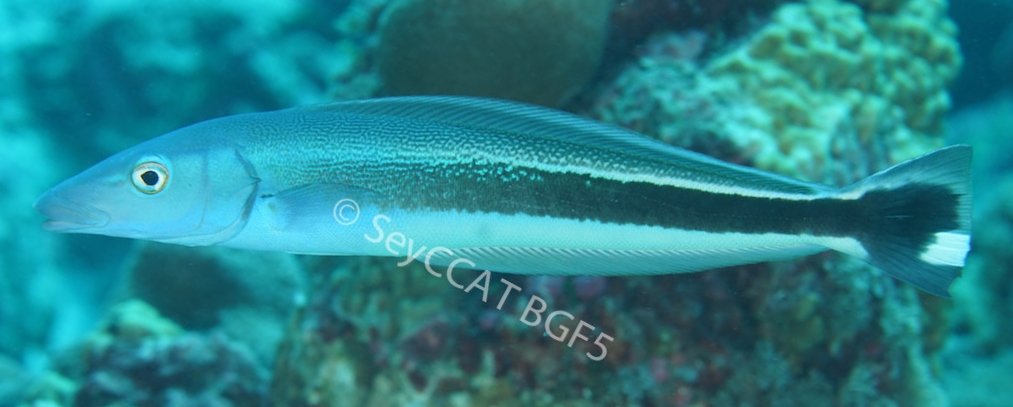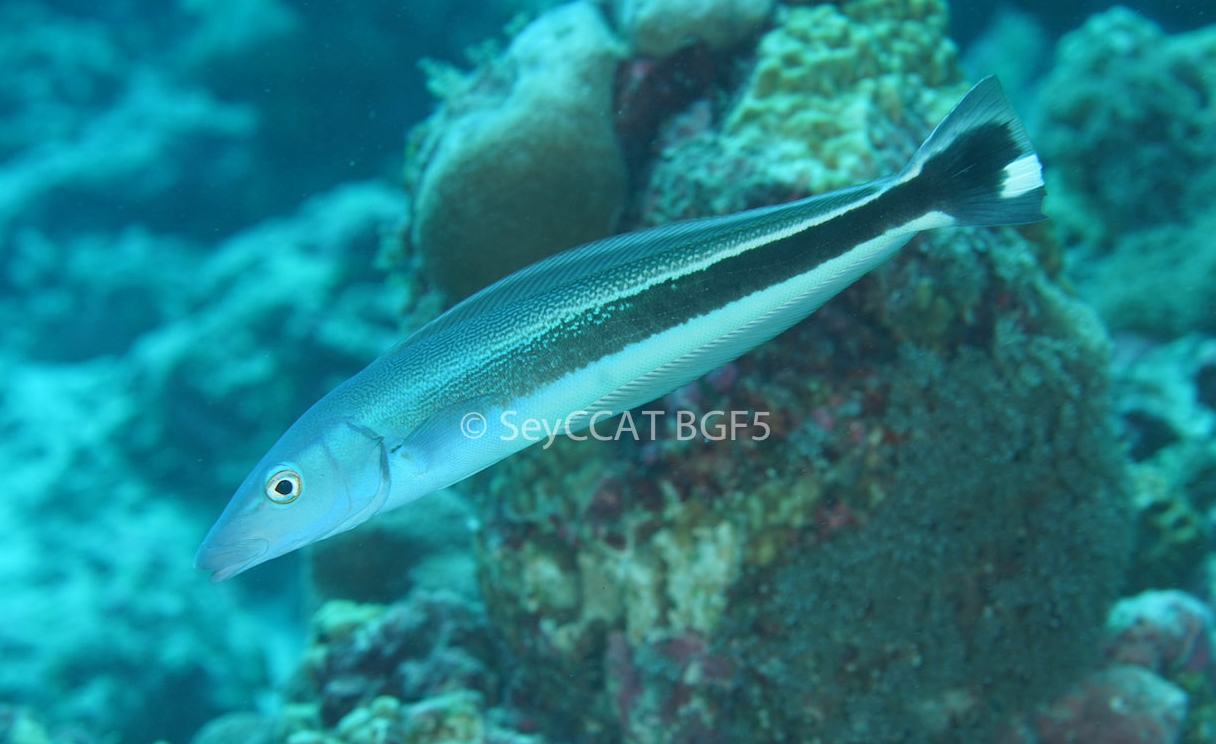Description:
Dorsal spines: 3-4; Dorsal rays: 43-47; Anal spines: 1; Anal rays: 37-40.
Elongated body with pointed snout. Maxilla does not reach past front edge of eye. Preoperculum margin smooth. Operculum has sharp spine level with eye.
Caudal fin truncate.
Colour. Head and anterior body bluish. Broad dark midlateral band on flank from midway behind pectoral fin rays down into caudal fin. Band is edged in
white dorsally with pale band ventrally. Terminal white blotch on caudal fin. Adults have fine lattice patterning dorsally. Dorsal fin greyish with pale
marginal band. Anal and pelvic fins white. Pectoral fins bluish. In juveniles the dark midlateral band covers nearly entire body and caudal fin and
extends across head to to tip of snout.
Size:
Maturity: Unknown. Max length : 45.0 cm SL; commonly to 35.0 cm SL.
Habitat and Ecology:
Inhabits outer reefs slopes (depth 5-65 m, usually 20-65 m). Lives in and around a burrow it constructs using sand and rubble. Usually encountered hovering
above the substrate seeking prey. Feeds on benthic invertebrates and zooplankton, also feed on crustaceans such as crabs and shrimp, molluscs, worms,
sea urchins and small fish. Solitary or in pairs. wary species, swims away from threats rather than diving into its burrow. Forms pairs for breeding.
Fishery Status:
This species is not protected or subject to fishery regulations. It has yet to be documented in the artisanal catch.
Notes:
Photo courtesy Eleanor Brighton and Chris Mason-Parker (c) 2022 Blue Safari Seychelles/Marine Conservation Society, Seychelles. Photograph taken at Alphonse group 2022.
References:
ALA. Malacanthus latovittatus (Lacépède, 1801), Blue Blanquillo. https://bie.ala.org.au/species/https://biodiversity.org.au/afd/taxa/e633c8fb-4736-40d4-a978-afcc3d2a79eb (13/08/22).
Bray. D.J. Malacanthus latovittatus in Fishes of Australia, https://fishesofaustralia.net.au/home/species/4244 (13/08/22).
Froese, R. & D. Pauly. (Eds.) (2022). FishBase. https://www.fishbase.se/summary/Malacanthus-latovittatus.html (13/08/22).
Smith, M. & Heemstra, P. (Eds.) (1999). Smiths’ Sea Fishes Edition 6. Springer-Verlag Berlin Heidelberg 10.1007/978-3-642-82858-4
Citation:
Nevill, J.E.G., Brighton, E. & Mason-Parker, C. (2022). Malacanthus latovittatus, Blue blanquillo. Seychelles Seatizens. www.seatizens.sc. https://seatizens.sc/species/malacanthus-latovittatus-lacepede-1801/


